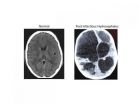Western neuroscience study reveals new link between basic math skills and PSAT math success
2013-01-04
(Press-News.org) New research from Western University provides brain imaging evidence that students well-versed in very basic single digit arithmetic (5+2=7 or 7-3=4) are better equipped to score higher on the Preliminary Scholastic Aptitude Test (PSAT), an examination sat by millions of students in the United States each year in preparation for college admission tests.
In findings published today in The Journal of Neuroscience research led by Daniel Ansari, Associate Professor in Western's Department of Psychology and a principal investigator at the Brain and Mind Institute, showed by utilizing functional magnetic resonance imaging (fMRI) on high school seniors that there was a significant link between their brain responses while solving extremely basic, single digit calculation problems and standard scores on the PSAT.
"The surprising thing here is that we found both a positive and negative relationship between brain activation during the very elementary, single digit arithmetic tasks and how well they did on the PSAT test, which measures advanced, high school level math skills," says Ansari, Canada Research Chair in Developmental Cognitive Neuroscience.
Students that scored better on the PSAT math tests generated greater positive activation in a brain region in the left side of the brain, called the supramarginal gyrus, which is known to be linked to fact retrieval, while students that scored lower, produced more activity in an area in the right side of the brain, called the intraparietal sulcus, which is involved in quantity processing and more effortful problem solving.
"Essentially, this means that those high school students that don't do so well on the PSAT use more problem solving strategies when they are doing very elementary sums and subtractions," offers Ansari. "If you are a high school student and you are using brain circuits that we know are associated with fact retrieval and fluency, we see evidence that you are also going to score better on the math portion of the college admission test. There is a clear link between fluency and high level abilities – being fluent at basic math counts."
This new knowledge is important from a math education perspective, concludes Ansari, because traditionally, debate rages between the "drill and kill" style approach versus more conceptual, problem-solving based pedagogy, but it is now clear that both methods are important in elementary education. These findings suggest that the way in which the brain is organized for single digit arithmetic calculation predicts performance on more complex math skills, illustrating the critical role that arithmetic fluency plays in building mathematical proficiency among students.
Given that the evidence is correlational, future studies following children from early elementary school through to high school will be needed to shed light on the specific ways in which acquisition of basic arithmetic fluency influences the learning of the kinds of skills tested by the PSAT.
###
Ansari teamed with former Western Postdoctoral Fellow Gavin Price, now an Assistant Professor in Educational Neuroscience at Vanderbilt University, and Dr. Michele Mazzocco from the Institute of Child Development at the University of Minnesota on the study, which was supported by funding from the Canadian Institutes of Health Research (CIHR), The Natural Sciences and Engineering Research Council of Canada (NSERC) and the Canada Research Chairs Program.
MEDIA CONTACT:
Jeff Renaud
Senior Media Relations Officer
@westernu_jr END
ELSE PRESS RELEASES FROM THIS DATE:
2013-01-04
The U.S. Defense Advanced Research Projects Agency (DARPA) recently selected Southwest Research Institute to provide the flight low-rate crosslink wireless communications platform for the System F6 Program.
The System F6 Program, which is envisioned to culminate in an on-orbit demonstration in 2015–2016, is designed to validate a new space mission concept in which a cluster of smaller, wirelessly connected spacecraft replaces the typical single spacecraft carrying numerous instruments and payloads. This "fractionated" architecture enhances survivability, responsiveness ...
2013-01-04
BOSTON – Genomic research is widely expected to transform medicine, but progress has been slower than expected. While critics argue that the genomics "promise" has been broken – and that money might be better spent elsewhere -- proponents say the deliberate pace underscores the complexity of the relationship between medicine and disease and, indeed, argues for more funding.
But thus far, these competing narratives have been based mostly on anecdotes. Ramy Arnaout, MD, DPhil, a founding member of the Genomic Medicine Initiative at Beth Israel Deaconess Medical Center (BIDMC), ...
2013-01-04
UNIVERSITY PARK, Pa. -- The amount of rainfall affects the number of infant infections leading to hydrocephalus in Uganda, according to a team of researchers who are the first to demonstrate that these brain infections are linked to climate.
Hydrocephalus -- literally "water on the brain" -- is characterized by the build-up of the fluid that is normally within and surrounding the brain, leading to brain swelling. The swelling will cause brain damage or death if not treated. Even if treated, there is only a one-third chance of a child maintaining a normal life after post-infectious ...
2013-01-04
UNIVERSITY PARK, Pa. -- Norfolk Southern Railway No. 999 is the first all-electric, battery-powered locomotive in the United States. But when one of the thousand lead-acid batteries that power it dies, the locomotive shuts down. To combat this problem, a team of Penn State researchers is developing more cost-effective ways to prolong battery life.
The experimental locomotive's batteries, just like automotive batteries, are rechargeable until they eventually die. A leading cause of damage and death in lead-acid batteries is sulfation, a degradation of the battery caused ...
2013-01-04
UNIVERSITY PARK, Pa. -- Experience working for a particular hospital matters when it comes to the performance of radiologists who work for outsourcing teleradiology companies, according to a team of researchers, whose finding could have important implications, given the growing use of telemedicine.
"More than half of all hospitals now use teleradiology services," said Jonathan Clark, assistant professor of health policy and administration, Penn State. "Hospitals send their X-rays, CT scans, MRIs and other images to outsourcing companies who then forward the images to ...
2013-01-04
SAN DIEGO – Genetic sequencing technology is altering the way cancer is diagnosed and treated, but traditional specimen handling methods threaten to slow that progress.
That's the message delivered this week in a column appearing in the Journal of the American Medical Association (JAMA) by Scripps Clinic physicians Eric Topol, Kelly Bethel and Laura Goetz.
Dr. Topol is a cardiologist who serves as chief academic officer of Scripps Health and director of the Scripps Translational Science Institute (STSI), leading Scripps' genomic medicine research efforts. Dr. Bethel ...
2013-01-04
CAMBRIDGE, MA -- Many industrial plants depend on water vapor condensing on metal plates: In power plants, the resulting water is then returned to a boiler to be vaporized again; in desalination plants, it yields a supply of clean water. The efficiency of such plants depends crucially on how easily droplets of water can form on these metal plates, or condensers, and how easily they fall away, leaving room for more droplets to form.
The key to improving the efficiency of such plants is to increase the condensers' heat-transfer coefficient — a measure of how readily heat ...
2013-01-04
Using brain scans of children and adults watching Sesame Street, cognitive scientists are learning how children's brains change as they develop intellectual abilities like reading and math.
The novel use of brain imaging during everyday activities like watching TV, say the scientists, opens the door to studying other thought processes in naturalistic settings and may one day help to diagnose and treat learning disabilities.
Scientists are just beginning to use brain imaging to understand how humans process thought during real-life experiences. For example, researchers ...
2013-01-04
Researchers have uncovered a new way that some bacteria survive when under siege by antibiotics.
This survival mechanism is fundamentally different from other, known bacterial strategies. Understanding it may be useful for designing drugs that target hard-to-treat bacterial strains, such as drug-resistant tuberculosis, an increasingly urgent public health problem. The study is based on Mycobacterium smegmatis, a cousin of the microbe that causes TB, and its response to the TB drug isoniazid.
The research, by Yuichi Wakamoto of the University of Tokyo and Neeraj Dhar ...
2013-01-04
LA JOLLA, CA – January 3, 2013 – Scientists at The Scripps Research Institute (TSRI) have achieved a feat in synthetic chemistry by inventing a scalable method to make complex natural compounds known as "polyhydroxylated steroids." These compounds, used in heart-failure medications and other drugs, have been notoriously problematic to synthesize in the laboratory.
The researchers demonstrated the new strategy by synthesizing ouabagenin [wa-bah-jenn-in], a close chemical cousin of ouabain, which Somali tribes once used as a potent poison on the tips of their arrows but ...
LAST 30 PRESS RELEASES:
[Press-News.org] Western neuroscience study reveals new link between basic math skills and PSAT math success



